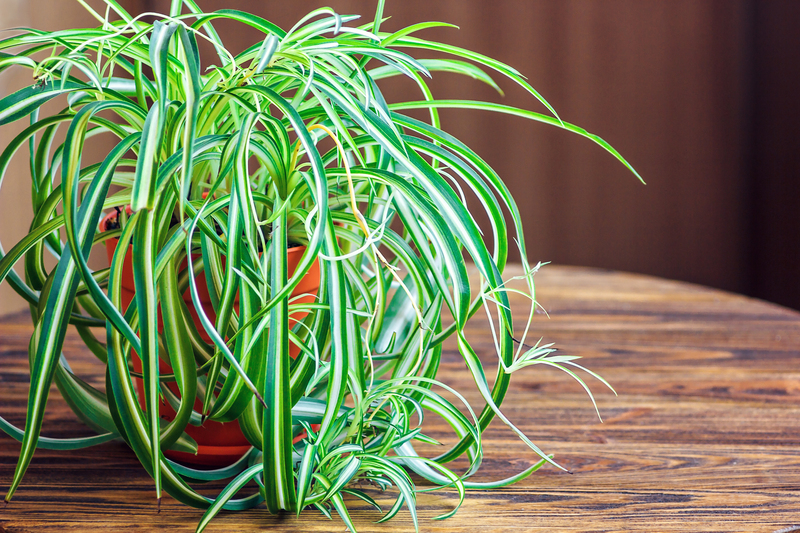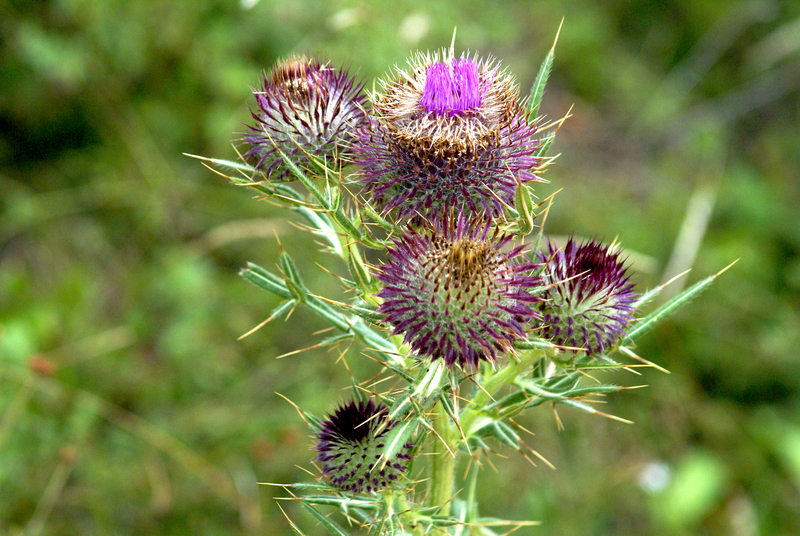Transforming a Neglected Garden Begins Here
Posted on 04/09/2025
Transforming a Neglected Garden Begins Here: A Comprehensive Guide
Have you recently inherited, purchased, or discovered a neglected garden on your property? If your outdoor space looks more like a wilderness than a welcoming sanctuary, don't worry. Transforming a neglected garden may seem like a daunting challenge, but with the right approach, tools, and imagination, you can turn it into a lush paradise. This complete guide will show you how to rejuvenate your overgrown, abandoned, or unloved garden step by step--from planning and cleanup to planting and long-term maintenance.
Why Start Transforming a Neglected Garden?
The benefits of revitalizing a neglected garden are endless. Gardens not only increase curb appeal and property value but also offer health, wellness, and environmental advantages. A restored garden provides:
- Personal satisfaction from nurturing living things
- Improved mental well-being and stress relief
- Fresh air and increased biodiversity
- A space for socializing, relaxing, and play
- Potential for home-grown fruits, herbs, and vegetables
Would you rather gaze out your window at a wild tangle, or enjoy the sight of a harmonious, leafy retreat? Whatever your vision, let's start the journey of transforming that neglected outdoor space.

Assessing the Garden's Current State
Step One: Take a Closer Look
Every garden rescue project begins with a thorough assessment. Use these questions as you walk the property:
- What is the size and shape of the garden?
- Is there any existing structure or hardscape worth keeping?
- Are there healthy trees, shrubs, or perennials hidden by weeds?
- What problems exist--broken fences, compacted soil, overgrowth?
- Is the soil quality good, and does the area get enough light?
Take photos and jot down your initial observations. This will help you track progress as you rejuvenate your overgrown garden.
Step Two: Safety First
Before diving in, safer is smarter! Watch for hidden hazards such as:
- Sharp objects (glass, nails, metal)
- Stinging insects or wildlife
- Unstable structures or holes
- Toxic plants such as poison ivy or hemlock
Clearing and Cleaning: The Foundation of Garden Revival
Remove Rubbish and Hard Waste
Start by removing any large debris--old tires, bricks, broken pots, or forgotten toys. Dispose of these responsibly. Next, identify which mature plants and structures you want to keep for the restored garden.
Attack the Weeds and Overgrowth
The key step in restoring an untended garden is cutting back rampant weeds and invasive plants. Use shears, weed whackers, or even a brush cutter for large areas. Pull weeds by the root to prevent quick regrowth. If brambles or thorny bushes dominate, tackle them in sections over several days.
Pro Tip: If your garden is overwhelmed, consider renting a skip or arranging a garden waste removal service.
Prune, Lop, and Shape Surviving Plants
Are there healthy trees and shrubs hidden in the chaos? Prune back dead, diseased, or damaged branches first. Shape up overgrown plants to encourage new, healthy growth. This is the time to rescue and rejuvenate favorite features before replanting.
Give Paths and Hardscapes New Life
- Unearth and clean patio stones, bricks, or decking
- Repair any broken fences, gates, or trellises
- Power wash hard surfaces
- Remove moss and algae for safety and beauty
Soil Improvement: The Secret to Garden Transformation
Test and Enrich the Soil
Soil is the heart of any garden. Transforming neglected lawns and beds often involves soil improvement:
- Test soil pH and texture with a simple kit
- Add organic matter--compost, mulch, or rotted manure
- Turn and aerate compacted earth to encourage drainage
- Address drainage issues with raised beds or the addition of sand/grit if necessary
Enriching the soil gives new plantings the best possible start as your garden is reborn.
Planning Your Garden's New Look
Get Inspired and Dream Big
Visualize your ideal garden before you plant anything new. Take inspiration from:
- Garden design books and magazines
- Online resources--Pinterest, Instagram, blogs
- Neighboring gardens and local parks
- Garden center displays and landscaping websites
Decide on Features to Include or Restore
When transforming a neglected outdoor space, consider which elements will bring the most enjoyment and function:
- Seating areas for dining or relaxation
- Paths leading through the garden
- Lighting for ambiance and safety
- Lawn or wildflower meadow sections
- Vegetable or herb beds
- Ponds, fountains, or other water features
- Play areas or wildlife habitats
Choose the Right Plants
When restoring lost beauty to an abandoned garden, plant selection is crucial. Focus on:
- Plants suited to your region's climate and soil
- Low-maintenance, hardy varieties if you're new to gardening
- Mix of evergreens, perennials, and annual color
- Pollinator-friendly flowers and herbs for bees and butterflies
- Edible varieties if you'd like vegetable or fruit beds
Planting and Rejuvenation: Bringing Life Back
Re-seeding and Repairing Lawns
Patchy or bare lawns can be revived by reseeding, overseeding, or turfing. Aerate the soil, rake away dead grass, and choose a hardy seed mix. Water consistently as the new grass establishes roots.
Planting and Mulching Flower Beds
Design your beds with layers of plants: tall perennials or shrubs at the back, low growers and ground covers at the front. After planting, mulch well with bark or compost to:
- Suppress weed regrowth
- Retain soil moisture
- Add a tidy, finished look
Introduce Container Gardens
If the soil is especially poor or hard to dig, use planters or raised beds for instant color and interest. Container gardens are ideal for patios, balconies, or awkward corners - and you can easily move them until you find the perfect look.
Add Personality With Finishing Touches
- Decorative pots and urns filled with seasonal flowers
- Repainted benches, trellises, or fences
- Wind chimes, lanterns, bird baths, or bug hotels
- Garden sculptures or upcycled art
- Solar or fairy lights wound through trees and shrubs
These finishing touches make your renewed garden feel personal, welcoming, and full of life.
Maintaining Your Revitalized Garden
Create a Simple Care Routine
After putting in the hard work of transforming a neglected landscape, keep it looking beautiful with ongoing care:
- Weekly weeding and deadheading
- Monthly pruning and shaping
- Regular lawn mowing and edging
- Seasonal fertilizing and mulching
- Watering plants deeply as needed, especially in dry spells
Monitor for Pests and Problems
Check regularly for slugs, aphids, fungal disease, or drought and address any issues promptly. The earlier you spot trouble, the healthier your restored garden will stay.
Common Challenges and How to Overcome Them
Dealing With Persistent Weeds
If weeds return after the initial clearing, apply:
- Mulch or weed-suppressing membrane
- Boiling water for patios and hardscapes
- Selective, glyphosate-free weed treatments (if needed)
Poor Soil or Drainage
If plants seem stunted or water pools, improve soil by:
- Adding composted organic matter every year
- Planting in raised beds
- Choosing plants that tolerate wet or dry conditions
Lack of Sunlight
If overgrown trees or buildings cast deep shade, pick shade-loving plants such as ferns, hostas, or hellebores. Consider thinning tree branches to let more light in--always check if tree work requires a permit in your area.
Before and After: The Joy of Garden Transformation
The sense of accomplishment from transforming a forgotten garden is truly rewarding. Take time to appreciate your progress by:
- Taking before-and-after photos
- Sharing your success with friends and family
- Hosting a small garden gathering or celebration
Remember, garden transformation is a journey, not a sprint. Projects can take weeks, months, or even years to fully mature - but every step refreshes your space and boosts your well-being.

Frequently Asked Questions About Rejuvenating Abandoned Gardens
- How much does it cost to restore a neglected garden?
Expenses vary based on garden size, condition, and preferences. DIY approaches save money, while hiring professional landscapers speeds the process--but can cost anywhere from $500 to several thousand dollars, especially if major hardscape changes are made. - What are the quickest ways to see improvement?
Clearing weeds and rubbish, mowing lawns, pruning shrubs, and adding fresh mulch or pots of annuals offers instant impact before you tackle more ambitious projects. - Is it possible to make a wildlife-friendly garden after years of neglect?
Absolutely! Add bird feeders, bee hotels, and native plants to attract pollinators and songbirds. Keep a corner wild as a mini meadow or pile of logs for hedgehogs and beneficial insects.
You Can Begin Transforming a Neglected Garden Today
No neglected garden is beyond help. With inspiration, a clear plan, and steady effort, transforming a neglected yard or garden is achievable for anyone. Whether your goal is a low-maintenance retreat, a productive vegetable patch, or a pollinator paradise, the keys are:
- Assessment: know what you have before you start
- Cleanup: clear away rubbish, weeds, and overgrowth
- Soil improvement: give your plants the best foundation
- Design: set goals, choose plants and features
- Ongoing care: regular maintenance prevents decline
Transforming a neglected garden begins now--your path to a vibrant, thriving outdoor haven starts here! Let this new journey inspire creativity, bring you closer to nature, and fill your days with satisfaction as your restored garden comes to life.

